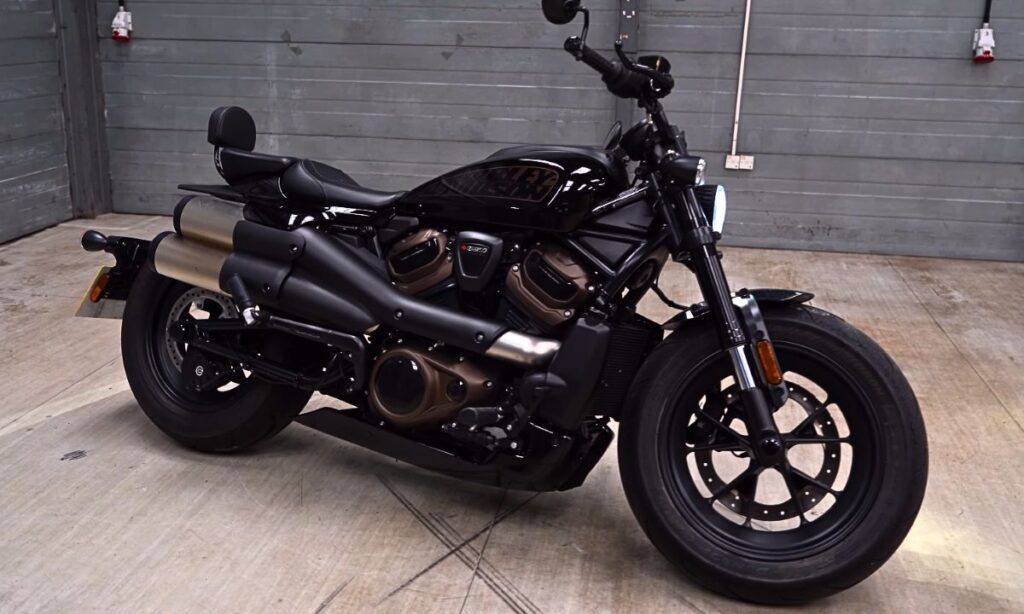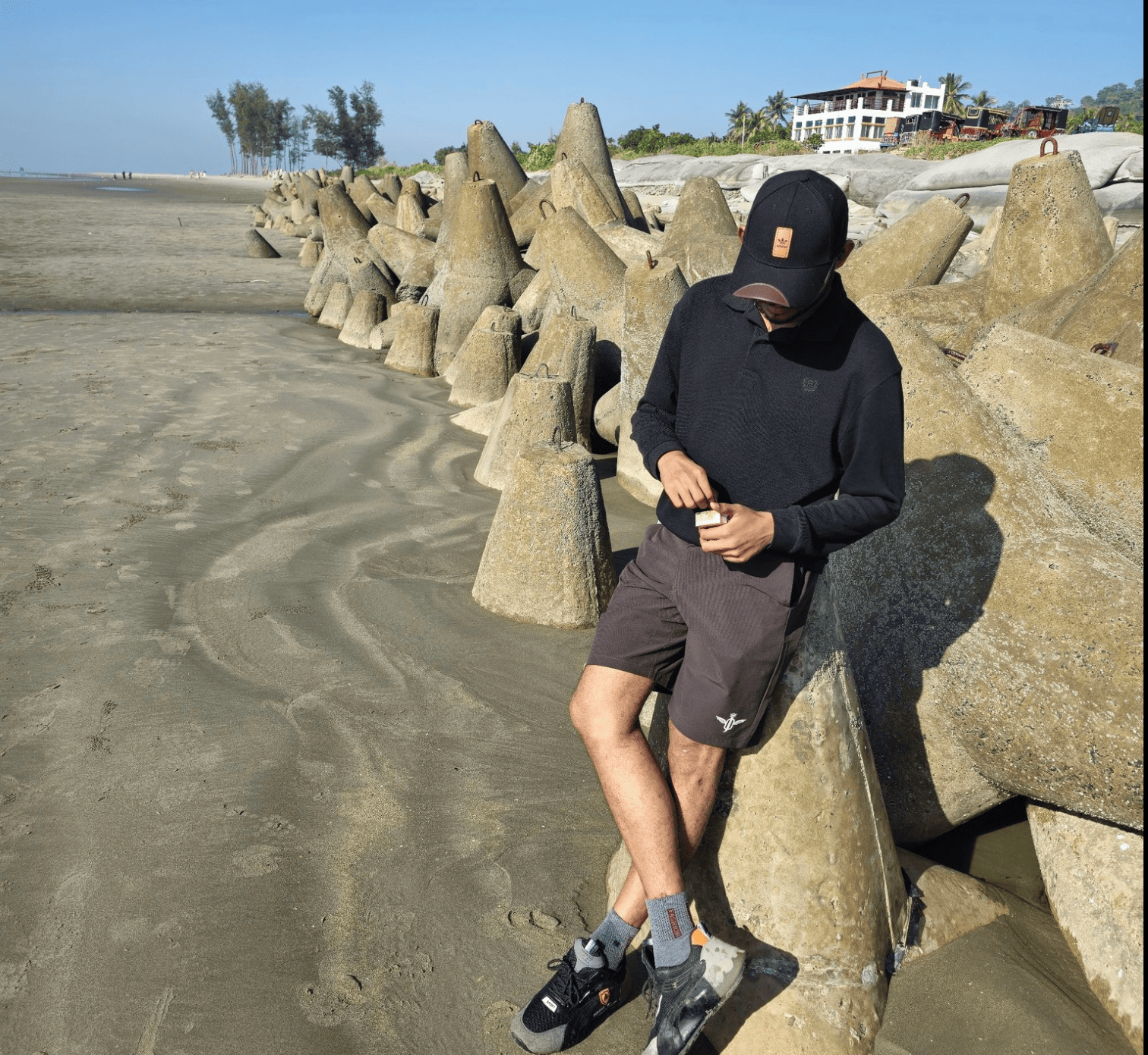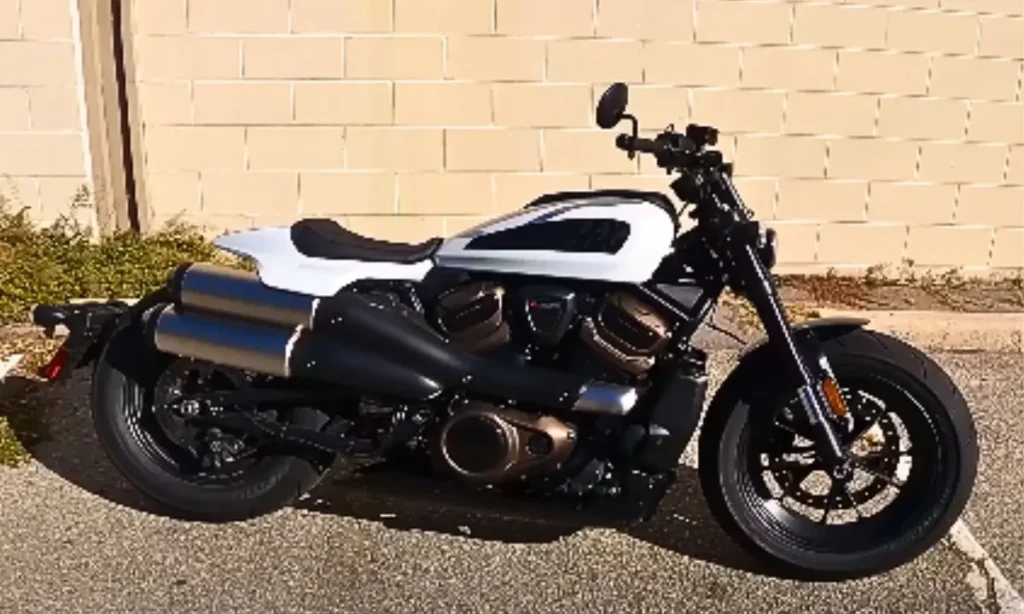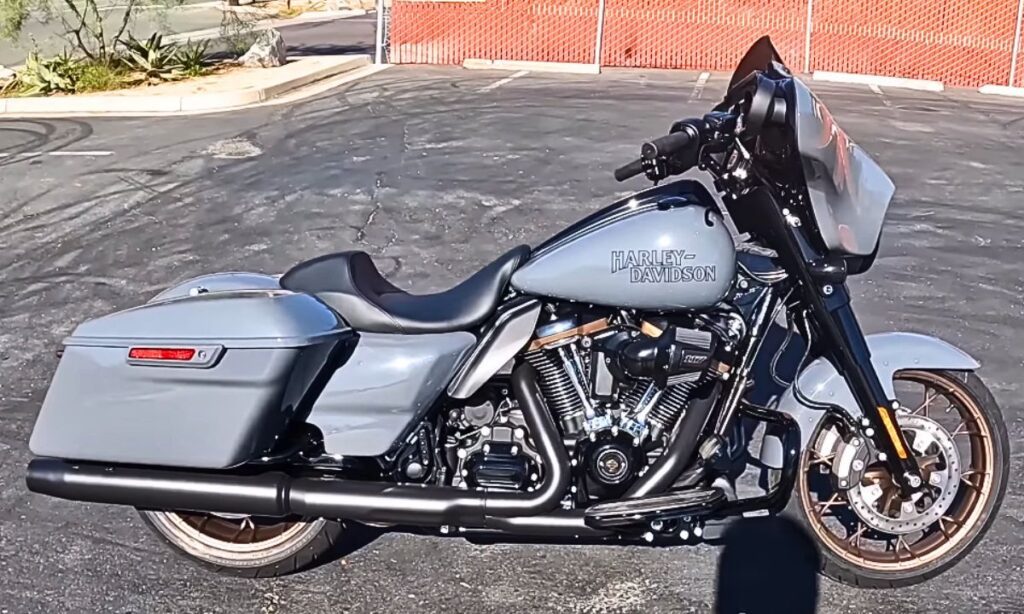The Harley Sportster has had many years on the road, with some better than others. This motorcycle has seen incredible success but has also faced some challenging times.
In this article, we’re going to talk about the highs and lows in the history of Harley Sportster.
The best years were when it was at its peak of popularity and performance, and the worst years were when it faced difficulties.
Best And Worst Years For Harley Sportster
The Harley Sportster has had a varied history, with some years standing out for their exceptional quality and others being remembered for less positive reasons.
A shining moment was in 1957, 1969, 2005, 2010, and 2014, when it set the standard for future models with its innovative design and powerful engine.
However, the 2001, 2004, and 2019 model years were low points due to numerous mechanical issues that tarnished the Sportster’s reputation.
The Sportster has changed and improved over time, with each year making it the iconic motorcycle it is today.

Best Years for Harley Sportster
The Harley Sportster, an enduring icon of the Harley motorcycle, has seen numerous transformations over its history.
While each year had its own improvements, enthusiasts and experts tend to favour certain model years as the best.
Here are the best years for the Harley Sportster that you must consider:
1. 1957 Sportster
The 1957 model year, often celebrated as a classic, marks the birth of the legendary Sportster series.
Introduced with a 55 cubic inch (900cc) overhead-valve engine, it was a significant breakthrough in the realm of mid-sized motorcycles.
The Sportster showcased an impressive top speed of 110 mph, making it an instant hit among speed enthusiasts.
Its design was a departure from the traditional, boasting a lean and athletic profile that appealed to a younger demographic seeking performance and aesthetics.
This model was also the first to feature an iconic ‘peanut-shaped fuel tank, enhancing its unique stance.
A key technological advancement of the 1957 Sportster was the incorporation of an iron head engine, offering greater durability and enhanced performance.
Its hydraulic valve lifters and four-speed transmission afforded the riders smoother operations and a more engaging ride.
The reason it’s often considered the ‘best year’ lies in its perfect balance of power, style, and innovation.
It was a motorcycle that defined Harley’s commitment to performance and rider satisfaction, setting a high benchmark for future models.
This groundbreaking model satisfied riders with its blend of speed, reliability, and comfort, making it a timeless classic in the world of motorcycling.
2. 1967 Sportster
The 1967 model stands out in the annals of motorcycle history for numerous reasons.
This iconic model boasted an Ironhead overhead-valve engine with a 900cc displacement, which was known for its exceptional raw power and torque.
This Sportster version was equipped with a four-speed transmission and a chain final drive, a blend of simplicity and performance that enthralled many riders.
The 1967 model also introduced an electric starting system, a significant technological advancement at the time, which added to the bike’s convenience and ease of use.
Its combination of classic design, high-performance specs, and innovative technology provided an unparalleled riding experience.
The 1967 Sportster perfectly balanced the raw Harley power with a sense of control that riders appreciated.
The timeless look and impressive performance of the 1967 Harley Sportster continue to captivate Harley enthusiasts today, making it a strong contender for the title of “Best Year for Harley Sportster.
3. 1969 Sportster
The 1969 Sportster is widely recognized as one of the best models, representing a perfect blend of power, style, and innovation.
This model was powered by an Ironhead overhead-valve engine with a displacement of 883cc, providing a robust and thrilling ride experience.
The engine was paired with a 4-speed transmission, promoting smooth and responsive gear shifts. The 1969 Sportster is particularly admired for its introduction of technological advancements.
This model was the first to feature an electric starter, a significant development that offered greater convenience and reliability to riders.
From an aesthetic perspective, the 1969 Sportster was a sight to behold with its sleek and streamlined design that still retained the classic Harley charm.
Its distinct look, coupled with its performance, made it an instant favourite among riders. Moreover, the 1969 Sportster showcased Harley’s commitment to rider comfort and satisfaction.
The model was equipped with improved suspension for a smoother ride, and the ergonomics of the bike were carefully designed to provide a comfortable riding position.
4. 1978 Sportster
The 1978 model year is often regarded as one of the most exceptional models in the bike’s long and illustrious history.
It’s equipped with a powerful 61 cubic inch (1000cc) engine, and the ’78 Sportster delivered a thrilling ride.
Its engine has an air-cooled, four-stroke, 45-degree V-twin paired with a four-speed transmission, offering an incredible road experience full of power and torque.
One of the distinguishing features of this model was the introduction of the XLCR Cafe Racer style.
This brought a new level of aggression and speed-oriented design to the Sportster line, making it a hit among riders seeking performance and style.
The blacked-out theme, combined with a unique Siamese exhaust system, gave the ’78 Sportster a sleek, distinctive look.
The 1978 model also saw a significant improvement in handling with a lower centre of gravity, enabling better control and increased rider confidence.
The addition of a triple-disc braking system provided excellent stopping power, further enhancing the rider’s confidence and safety.
The 1978 Sportster, with its blend of performance, innovation, and style, stood out as a symbol of the brand’s commitment to delivering the ultimate riding experience.
5. 1983 Sportster
The 1983 Sportster is a standout model for several reasons that make it one of the best in the Sportster lineup.
The 1983 model was equipped with an Ironhead 1000cc V-twin engine, a dependable powerhouse that delivered impressive performance and reliability.
This model introduced an upgrade from the 6-volt electrical system to a more efficient 12-volt system, a significant tech advancement of its time, offering a more reliable ignition and brighter headlights.
Notably, this was the first year Harley-Davidson introduced the belt drive in the Sportster series.
The change provided smoother, quieter operation and lower maintenance compared to the previous chain drives.
This shift to belt drive was significant as it minimized the routine maintenance needs of riders and significantly improved ride quality.
Its distinctive styling with the teardrop fuel tank, low-rise handlebars, and iconic Harley badge made it an instant classic.
Meanwhile, the improved suspension and comfort-oriented ergonomics provided a smooth, comfortable ride.
6. 1994 Sportster
The 1994 model is often hailed as a standout model in the Sportster series, capturing the hearts of riders with its top-notch specs and innovative technologies.
It was packed with a 1200cc V-twin engine, and the bike boasted a power output that was an impressive feat for its time.
Its engine came with a four-speed transmission, offering a smooth and enjoyable riding experience.
With a low seat height and an agile handlebar, the 1994 Sportster was praised for its rider-friendly ergonomics.
Adding to its appeal was the advanced suspension system that ensured a comfortable ride even on rugged terrains.
Its classic design, combined with Harley’s signature chrome finish, made it a visual treat for motorcycle enthusiasts.
The 1994 Harley Sportster was not just a bike; it was a perfect blend of power, performance, and style.
7. 2000 Sportster
The 2000 Sportster is often heralded as one of the best years for the beloved motorcycle model.
It came with an 883cc air-cooled Evolution engine, an icon in the industry revered for its remarkable power, reliability, and easy-to-maintain features.
The bike boasted a high torque output at low RPM, ensuring a smooth and comfortable ride at all speeds.
The Sportster’s classic design was complemented by modern technology at the time, including an ESPFI that enhanced power delivery and fuel efficiency.
The 2000 Sportster featured a low-rise handlebar, a comfortable seat, and forward foot controls, striking the perfect balance of comfort and control.
Moreover, the model’s longevity and sheer popularity over the years have made it an icon on the open road.
Its blend of power, performance, and timeless style truly set it apart, satisfying riders with its unique blend of classic Harley-Davidson heritage and cutting-edge technology.
8. 2003 Sportster
The 2003 model stands out as a remarkable model in the Sportster lineage due to its unique specifications and breakthrough technologies.
This model year is powered by an 883cc air-cooled Evolution V-Twin engine, renowned for its raw power and reliability.
The bike features a low seat height and a lighter frame for improved handling and manoeuvrability.
The 2003 Sportster was equipped with advanced technologies for the time, such as a self-cancelling turn signal system and electronic speedometer.
These features notably enhanced the riding experience by providing convenience and added safety measures.
The 2003 model’s reputation as the best year is not only based on these impressive specs and technologies but also on its ability to satisfy riders.
With its mix of classic Harley-Davidson styling and modern features, it catered to traditional Harley loyalists and new riders looking for a powerful yet manageable motorcycle.
The blend of power, handling, and comfort struck a perfect balance, making the 2003 Sportster a favourite among the Harley-Davidson community.
9. 2005 Sportster
The 2005 model year is a unique blend of power and style, is often regarded as one of the best years for this model.
It was equipped with a robust 883cc or 1200cc V-twin engine, depending on the variant, that provided an invigorating riding experience.
The 2005 model saw the introduction of a new frame, which increased the bike’s lean angle and overall rideability.
With a comfortable seat height of 26.3 inches, it catered to riders of various heights, ensuring a comfortable and confident ride.
The 2005 Sportster also featured a rubber-mounted engine to reduce vibration, improving rider comfort on longer journeys.
It also has technological advancements, such as a high-performance electrical system and an evolved clutch system, which contributed to the bike’s reliability and effortless handling.
The cherry on top was the classic design paired with modern elements, something Harley-Davidson has been renowned for.
All these factors ensured the 2005 Sportster not only met but exceeded rider expectations, cementing its place as one of the best years for the Sportster series.
10. 2007 Sportster
It came equipped with a robust 883cc or 1200cc V-twin engine, depending on the model variant, delivering power and performance.
Its technological enhancements, such as Electronic Sequential Port Fuel Injection (ESPFI), made for a more efficient and smoother ride than its predecessors.
The Sportster’s design in 2007 was a nod to its heritage, featuring a pure, no-nonsense aesthetic that Harley-Davidson enthusiasts appreciated.
Its low seat height and nimble handling satisfied riders by providing comfort and controllability.
One of the key reasons this year’s model is considered the best is the introduction of the rubber-mounted engine.
This feature significantly reduced engine vibration, leading to a more comfortable ride and less rider fatigue.
All these factors combined to make the 2007 Sportster a standout model, encapsulating what riders love most about the Harley-Davidson brand.
11. 2010 Sportster
The 2010 Sportster stands out as a pinnacle year for this iconic motorcycle range due to its innovative specs and technologies.
This model was powered by a 1200cc V-Twin Evolution engine, delivering robust power and performance.
It featured Electronic Sequential Port Fuel Injection (ESPFI), improving power delivery and throttle response.
A low, comfortable seat height of just 26.3 inches and a dry weight of 562 pounds gave the bike an agile, manageable feel.
The Sportster embraced technology with the introduction of a self-cancelling turn signal system for added safety and convenience.
Moreover, it was equipped with a state-of-the-art security system, including a hands-free fob that automatically armed and disarmed the vehicle’s electronic security functions as you approached or moved away from the bike.
The sleek, street-savvy style, coupled with its rider-friendly functionality, made the 2010 Sportster a favourite among Harley enthusiasts.
12. 2014 Sportster
This model year notably introduced the new Smart Security System, a hands-free, self-arming security system that enhances the overall safety and convenience for the riders.
Under the hood, the 2014 Sportster was equipped with a powerful 1200cc Evolution engine that delivered a strong torque output, ensuring a smooth yet thrilling ride.
Further, the motorcycle’s precision cooling system contributed to maintaining an optimal engine temperature, leading to enhanced ride comfort and longevity of the motorcycle.
The 2014 model also boasted numerous ergonomic features tailored to rider comfort.
These included a low seat height that improved handling and control, forward-mounted foot controls for a laid-back riding position, and a tapered peanut fuel tank that enabled easier reach to the ground.
It combines the classic Harley-Davidson aesthetic with modern technology for a riding experience that is equally satisfying for long-time Harley fans and new riders alike.
Worst Years For Harley Sportsters
The Harley-Davidson Sportster series is known for its classic design and powerful performance, but it has had a few bad production years.
1. 1980 Sportster
The 1980 model holds an infamous reputation among motorcycle enthusiasts, often dubbed as one of the worst years for the Sportster line.
This specific model was plagued by a myriad of mechanical and design issues that marred its overall performance and dependability.
A significant issue was the introduction of the 17-digit VIN, which led to multiple factory recalls due to engine cases that were incorrectly stamped.
The shift from mechanical to electronic ignition systems presented frequent breakdowns, leaving many riders stranded.
The 1980 Sportster was also known for its Ironhead engine. While iconic, the Ironhead was beset with oil leaks and overheating problems, causing frequent and costly repairs.
On the design front, many riders found the bike aesthetically unappealing due to its large and unrefined shape.
Its heavy weight also resulted in poor handling, further diminishing the riding experience.
The cumulative effect of these inherent issues led to widespread dissatisfaction among Harley-Davidson enthusiasts, which, in turn, negatively impacted the popularity and sales of the 1980 Sportster.
2. 1981 Sportster
The 1981 Sportster has often been singled out as one of the worst years for the Sportster motorcycle lineup.
At this time, Harley-Davidson was trying to rebound from near bankruptcy and ultimately fell short in terms of quality.
The 1981 Sportster was plagued by a common problem seen in many bikes produced during this era: an unreliable electrical system.
Owners frequently reported glitches such as short circuits, malfunctioning indicators and ignition problems, all attributable to poor wiring.
Furthermore, the ’81 Sportster suffered from a problematic transmission.
Riders often complained about the transmission ‘slipping’, leading to a lack of control and challenging gear changes, which posed serious safety concerns.
The motorcycle also featured the Ironhead engine, notorious for overheating and struggling with oil leaks despite proper maintenance.
The numerous problems damaged the reputation of the 1981 Sportster, often resulting in expensive repairs or frequent maintenance.
3. 1991 Sportster
Most notoriously, it was plagued by oil leakage problems. Riders reported that the oil tank would often leak, leading to unsightly messes and potential safety hazards on the road.
Also, the design of the oil tank made it difficult to rectify the issue without professional aid. Furthermore, the 1991 Sportster was known to have a faulty electrical system.
Many riders reported that the bike’s electrical components inexplicably fail, leaving them stranded or in dangerous situations.
This unreliable electrical system created a lack of trust in the bike’s dependability, further driving down its reputation among Harley enthusiasts.
These combined issues, oil leaks and unreliable electrical systems led to a significant dip in customer satisfaction.
4. 2001 Sportster
The 2001 Sportster has the unfortunate reputation of being one of the years to avoid this iconic motorcycle line.
There are several reasons for such negative feelings, which mainly revolve around the design and reliability problems that the 2001 Sportster models had to grapple with.
One of the most frequently reported issues was the absence of a rubber-mounted engine, resulting in increased vibrations that made the bike uncomfortable to ride on long trips.
This model of the Sportster had a big problem: its brakes weren’t good enough. They often stopped working, which meant expensive fixes were needed often.
The oil leak issues were another major drawback that left many owners frustrated. The leak was mainly due to a fault in the design, which led to oil seeping from the engine seals.
Not only was this messy, but it was also detrimental to the performance of the bike and could potentially lead to serious damage if not addressed promptly.
The ignition timing system, which often didn’t work properly, made these issues worse. It resulted in bad performance and less fuel efficiency, making the bike less attractive.
5. 2004 Sportster
The year 2004 was indeed a dark time. This model was plagued by numerous issues that tarnished its reputation and led to a significant drop in customer satisfaction.
The key issue revolved around the severe design flaws in the rubber-mounted engine.
This design was intended to reduce vibration, but it unintentionally resulted in excessive movement and instability at high speeds.
This not only disturbed the rider’s comfort but also posed serious safety issues.
Another substantial problem was with the transmission. Riders reported rough and unpredictable gear changes.
This problem was often associated with an annoying and concerning clunking noise.
The 2004 Sportster also had a notable problem with its carburettor. Many users complained about the bike running rich, resulting in poor fuel economy and performance issues.
This issue was particularly prominent in cold weather conditions, where the bike would often struggle to start.
These issues combined led to the 2004 Sportster being labelled as one of the worst years for Harley.
The persistent mechanical problems and lack of quality control not only resulted in a frustrating riding experience but also negatively impacted Harley’s reputation.
6. 2019 Sportster
The 2019 Sportster was plagued with mechanical issues, such as problems with the clutch assembly and electrical system.
Many riders reported premature wear of the clutch, causing noticeable slippage even with moderate use.
The electrical issues ranged from faulty ignition switches to malfunctioning fuel gauges, adding to the frustration of owners.
Furthermore, the suspension system of the 2019 model was not up to par.
Riders complained about a rough ride, especially on uneven terrain, attributing this to the inadequate shock absorption of the stock suspension.
This made long rides uncomfortable, detracting from the riding experience that is central to the Harley-Davidson brand.
Lastly, the 2019 Sportster had issues pertaining to the fuel system. There were instances of the carburettor clogging, leading to poor engine performance and efficiency.
This problem often necessitated expensive repairs, adding to the overall cost of maintaining the bike.

Tonmoy, the brains behind the influential motorcycle-focused website, TwoWheller.com, is a dedicated and passionate advocate for biking culture. Born and raised in a family of motorcycle enthusiasts, his love for two-wheeled transportation was ignited at an early age. His commitment to providing in-depth reviews and helpful tips for riders has established him as a respected figure in the motorcycle community.

